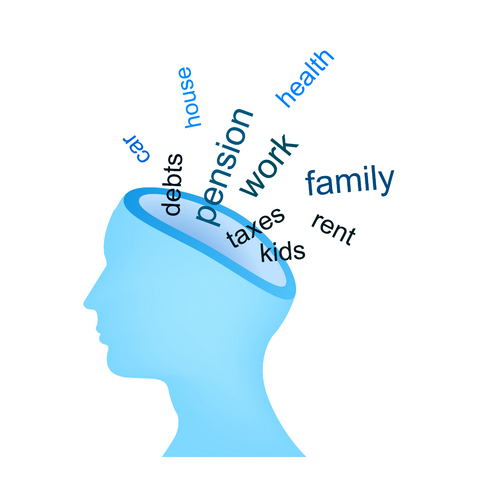MEDITATION TIP OF THE WEEK
…IS A SERIES OF SHORT, EASY TO REMEMBER, AND BASIC TIPS ON HOW TO MEDITATE. PLEASE LET ME KNOW WHAT YOU THINK, IS IT HELPFUL?
When Meditating, Understand Thoughts to be Like Clouds
Minding one’s life mindfully, aware, and compassionately comes from realizing the changing nature of our thoughts. We do this by turning the mind inward, transforming the stormy arisings of thoughts, emotions, and feelings by recognizing them to be impermanent phenomena like passing clouds in the sky.
Minding one’s life mindfully comes from realizing that whatever thoughts and emotions may be stirred up while going about your daily life are simply the result of your past experiences and attitudes, and have very little to do with the present moment. And it’s the same for everyone else too!
In Meditation, Simply Observe Your Thoughts
But, how do we simply observe our thoughts without getting caught up in them? I know that for me, there are times when my thoughts seem to dominate my mind and the idea of getting free, or even loosening their grip on me can seem impossible.
In another post on this site, (In Meditation) Where Are Our Thoughts Anyway?, we looked at fuzzy, almost “cloud-like” nature of thoughts, and how when we begin to work with our thoughts, they can appear insubstantial or even disappear!
The nature of clouds is to arrive, float within the sky for a while, and then leave. In the very same way, when observed mindfully with awareness, our thoughts, whether “good” or “bad,” will simply pass through our mind and then dissipate and disappear…if allowed to.
Become Aware of Your Thoughts
To begin to watch the cloud-like nature of our thoughts, we need to become aware that we’re thinking most of the time and that many of these thoughts either go relatively unnoticed or become the object of our fascination. Either way, ignored or grasped, our thoughts affect our responses and reactions to almost every situation.
We begin to work with our thoughts by using our breath as the anchor of our attention. We observe our breath because it is always there, because we can do it anywhere—in the car at a red light, on a plane, as we’re going to sleep, when we’re stressed out at work…even when we’re dying.
As we become more skilled in observing our own breath, we can help our patients with their challenges by helping them to do the same. Think about this the next time that you’re at the bedside, or in traffic, or with your family, or with yourself. Watch the thoughts, cloud-like in nature, as they arrive, remain, and then depart. Are they any more substantial than the clouds?
Exercise – Riding the Breath With the Mind
How To Meditate
Maybe you’ve already got a meditation practice. If that’s the case, great! Keep it up. And feel free to use all of the content from this site to support you in your efforts. If you haven’t started to meditate, begin now.
Many people don’t meditate because they believe that they need to do “something special” in order to meditate, maybe you’re one of them. “Doing something” special isn’t the case. All you need is your breath, and a few minutes of time set aside to begin your practice. Here are some tools to get you started:
- Meditation audio for using your breath as the anchor of your attention during meditation.
- Ebook and two chapters from the book, Minding the Bedside: Nursing from the Heart of the Awakened Mind, on how to meditate.
- And of course, buy the book, Minding the Bedside: Nursing from the Heart of the Awakened Mind. Even though it’s written for nurses, it can be read by anyone. I’ve had feedback from many people who aren’t nurses that it changed how they viewed and worked in the world. You can even buy it in a Kindle version!
This site has tons of tools for learning how to meditate and be compassionate.
I encourage you to look through the HUNDREDS of articles that I’ve written and especially check out my weekly meditation tips and other useful meditation materials provided for your health and well being. And please let me know if you’d like to discuss anything with me, have any questions or need clarification regarding anything that I’ve written about.
Thanks for visiting and have a mindful day.






[…] end their lives by their own hand and say, “Look more deeply within my dear friend. Look past the clouds of your mind and into the vast expanse of the sky-like nature of your mind. Connect with the natural peace and […]
[…] my mind as hundreds (if not thousands!!) of thoughts, feelings, and emotions pass through it, like clouds passing through the sky. This teaches me that everything arises and then, given enough time and space, passes out of my […]
Hi there,I read your new stuff named “Minding The Bedside | How to Watch the Cloud-Like Thoughts Within Our Mind” daily.Your writing style is witty, keep doing what you’re doing! And you can look our website about proxy server list.